In this article, we want to share some fun and interesting facts about Rome and some of the best landmarks in Rome. These are cool things to know about Rome that will help you uncover more about the places you visit.
We absolutely love Rome. We’ve been there a few times, and fall in love with it more each time. But we realize that there’s so much we don’t know about the places we visit. You can’t always walk around Rome with a guide, and with so much history in the city, it’s hard to keep tabs on everything we learn.
We wanted to help you have more fun in Rome by sharing some of the most interesting facts about Rome we’ve learned over time. We’ll share some of the fun facts about its landmarks, about the city itself and other notes we’ve picked up along the way.
Whether you’re looking to explore Rome’s most popular landmarks, its hidden gems, or some of the free things to do here, we’ve got you covered. With these few articles, you’re bound to learn something new about Rome and its landmarks you might not have known about before. We can also help you with our article on all the best Rome tips and hacks to know!
An important note, if you plan on visiting Rome in 2025
Starting on December 24, 2024, and running until January 6, 2026, the Catholic Church will be celebrating the Holy Year 2025. It is observed every 25 years as a time for spiritual renewal and celebration. This year’s theme is Pilgrims of Hope and the event will start with Pope Francis opening the Holy Door of St. Peter’s Basilica.
During this time, millions of pilgrims are expected to visit Rome to participate in religious events. There are major concerns about the readiness of infrastructure and the impact on local residents, including housing shortages due to the conversion of apartments into short-term rentals for pilgrims.
This also means that there will be an increased number of tourists in the city.
If you are thinking of visiting Rome during these dates, we highly advise you plan ahead. Book accommodations, restaurants and activities as early as you can. Avoiding crowds might be difficult overall. Start your days early and try to head to the lesser known parts of the city.
For all the even details, check out the official Jubilee site here.

This article may contain affiliate/compensated links. For more information, please see our disclaimer here. We take all the efforts necessary to ensure the information included in this post is accurate, correct and current, sometimes, things just change! Travel information like opening hours, business operations and prices may change. If you find anything in this post that is incorrect or outdated, please let me know in the comments so I can update it for other readers. Cheers!
We love helping you plan amazing trips. If you need any of these services, consider booking them through our affiliate links. Without costing you anything extra, you will be helping support us so we can continue to write these blogs for you.
We thank you again for your continued support.
🏠 Find the perfect place to stay with Booking.com
✈️ Get the cheapest flights with Skyscanner
🚣 Book your favorite activities with Viator
💻 Make sure you have everything you need for your epic trip by checking our store on Amazon
Table of Contents
Interesting facts about Rome
Rome, often dubbed the “Eternal City,” is a living museum where every cobblestone street and ancient monument tells a story of grandeur, triumph, and enduring legacy. Let’s dig into some of them.
Welcome to Rome – where the past is present, and every moment is a masterpiece waiting to be discovered. We’re hoping these fun facts and interesting tidbits will give you a new perspective on this ancient city… or they might just be good things to know about Rome for your next trivia night!


Interesting Facts about Ancient Rome
The first shopping mall was in Rome.
Before modern malls were a thing, Rome boasted the Trajan’s Market, which was built around 100 AD. This multi-story complex housed shops, offices, and even apartments, serving as a blueprint for future commercial centers.
Circus Maximus is super impressive.
The Circus Maximus is considered to be the largest sports stadium ever built. It was mainly used for horse racing and remained in operation until the early decades of the 6th century.


Rome was home to talking statues.
During the late Roman Republic, certain statues were fitted with hidden vocal cords and mechanisms. This was a way for false “prophets” to speak through them. They would try and influence political decisions and spread propaganda.
Ostia Antica – Rome’s Ancient Harbor City
For those looking for a hidden gem near Rome, head to Ostia Antica, just outside Rome. This was the ancient harbor city of Rome. It provides a well-preserved glimpse into daily life in ancient Rome. It’s often overlooked compared to more famous sites.
Urine was used as a cleaning agent.
Yup, you read that correctly! In ancient Rome, urine was used for everything from whitening teeth to tanning leather and even as a cleaning agent due to its ammonia content. Luckily, things have changed! Modern Rome offers far more pleasant cleaning solutions!

Fun facts about Rome
A country within a city.
Vatican City, the world’s smallest independent state, sits right within Rome’s borders. So, technically, you can visit two countries in one trip! Unfortunately, you can’t really get a new stamp on your passport.
More fountains than anywhere else in the world.
With over 2,800 fountains, Rome claims the title of “City of Fountains.” From the iconic Trevi that pumps 800 gallons of water every second through it, to hidden gems tucked away in alleys, these watery works of art add a charming touch to the cityscape.
Best of all, the water in Rome is potable, so you can bring a reusable bottle with you and fill it up wherever you need to. You can even find these fountains at landmarks like the Roman Forum, a must-see during your Rome itinerary.


Cats rule the streets of Rome.
Rome has a long history of caring for stray cats, with over 300,000 roaming the city freely. They’re even protected by law! So, be prepared for feline encounters as you explore the city. Some of the best places to see them in the ancient ruins of Largo di Torre Argentina, the Protestant cemetery and Basilica di Santo Stefano Rotondo.
Rome holds a few World Records.
The Colosseum holds the record for being the largest amphitheater ever built. More on this later.
The Vatican City holds the record for having the smallest population of any independent state.
The Trevi Fountain holds the record for the largest Baroque fountain in the city.
There are many more records, but that would require a whole new article!

Interesting facts about Rome’s iconic landmarks
There are 14 UNESCO World Heritage sites in Rome.
The UNESCO World Heritage sites in Rome are:
- Colosseum
- Via dei Fori Imperiali
- Altar of the Fatherland
- Piazza Venetia
- Spanish Steps
- St Peter’s Basilica
- Castel Sant’Angelo
- Pantheon
- Campo De’ Fiori
- Circus Maximus
- Temple of Hercules Victor
- Tiber Island
- Papal Basilica of St. Paul outside the Walls
- Bocca della Verità
The largest amphitheater in the world.
Even if it was built in 80 AD, the Colosseum is still the largest man-made amphitheater in the world. Back in its hey day, it used to hold anywhere from 50-80,000 spectators.
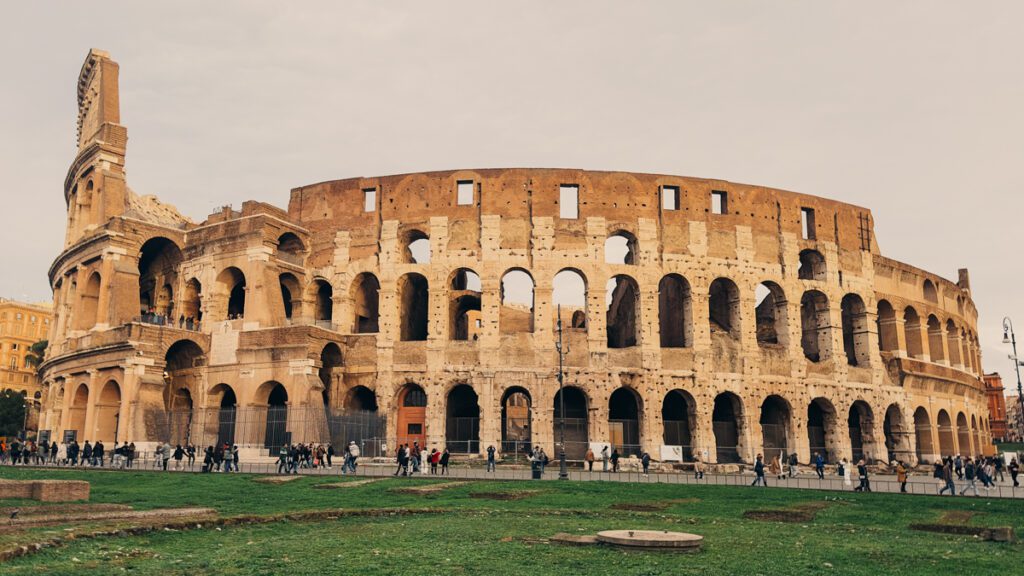
The Vatican is more impressive than you think.
The Vatican Museums are home to a collection of over 70,000 pieces. This is one of the largest collections of artwork and artifacts in the world. And St Peter’s Basilica is said to be the largest church in the world.
Michaelangelo’s masterpiece was a labor of love.
It took the great master Michaelangelo 4 years to paint the ceiling of the Sistine Chapel. He spent the whole time lying on his back to complete his great work of art.

A hidden message in the Pantheon.
If you look closely at the Pantheon’s oculus (the circular opening in the ceiling), you’ll notice a peculiar phenomenon. During spring equinox, sunlight shines directly on the tomb of Emperor Hadrian, suggesting a possible astronomical connection.
What’s also impressive is that the dome of the Pantheon, with a diameter of over 43 meters, is one of the largest in the world.
Although the visits to the Pantheon are now with a paid entrance, you can still visit it on the First Sunday of the month, when it’s free.
The Capitoline Museum is really old.
In fact, the Capitoline Museum is estimated to be the world’s oldest public museum. It first opened to the public in 1734 under Clement XII. The museum houses a fantastic collection of classical art and archaeology. Well worth adding to your Rome itinerary.
The Trevi Fountain is a money-maker.
With everyone tossing coins into the Trevi Fountain, it is said that there are over €3,000 collected daily. The money helps fund social programs and is donated to local charities.

The Spanish Steps are French.
Even if they’re called the Spanish Steps, these were actually funded by the French diplomat Étienne Gueffier. And the Trinità dei Monti church at the top was also financed by the French.
The reason they call these the Spanish Steps is because the Spanish Embassy is near the top of these famous steps.
The legend of the Bocca della Verità
This “Mouth of Truth” sculpture in the Santa Maria in Cosmedin church was once used to test suspects’ honesty. During the Middle Ages, it was said to have the power to utter oracles and was used to test the fidelity of wives to their husbands.
It was famously seen in Roman Holiday, an American movie starring Audrey Hepburn and Gregory Peck. Today, you can still place your hand inside its mouth, and say something that may be true or a lie. According to legend, it will bite you if you’re lying!
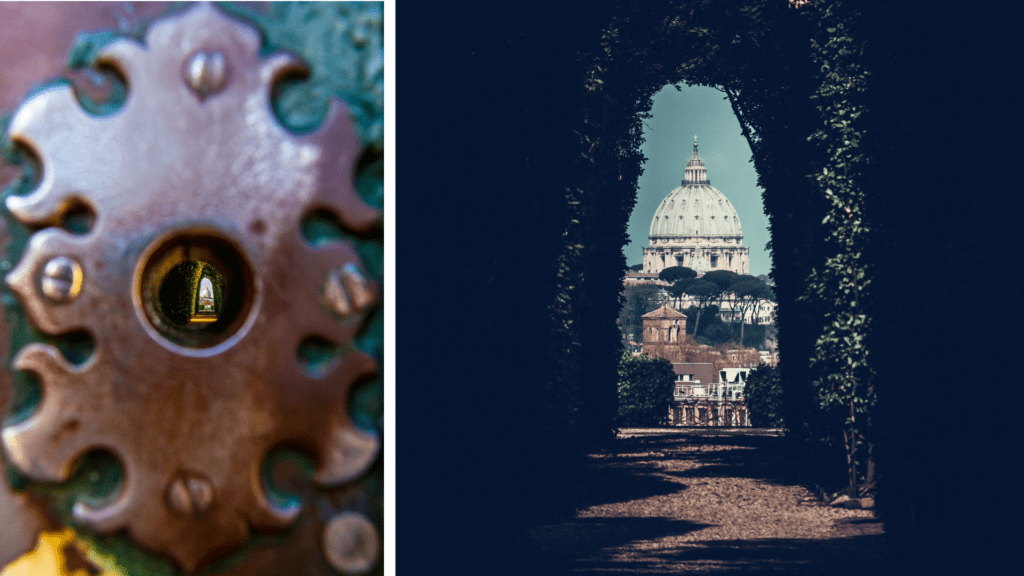
The Aventine Keyhole is a perfect frame
On the Aventine Hill, there’s a keyhole in the door of the Priory of the Knights of Malta. Peeking through it, you can have a perfectly framed view of St. Peter’s Basilica. For photography lovers, this creates a unique perspective.
Villa d’Este’s unique water organ
Villa d’Este in Tivoli, near Rome, features a unique water organ. The instrument uses water pressure to create music, and its intricate system of fountains and water features is unique.
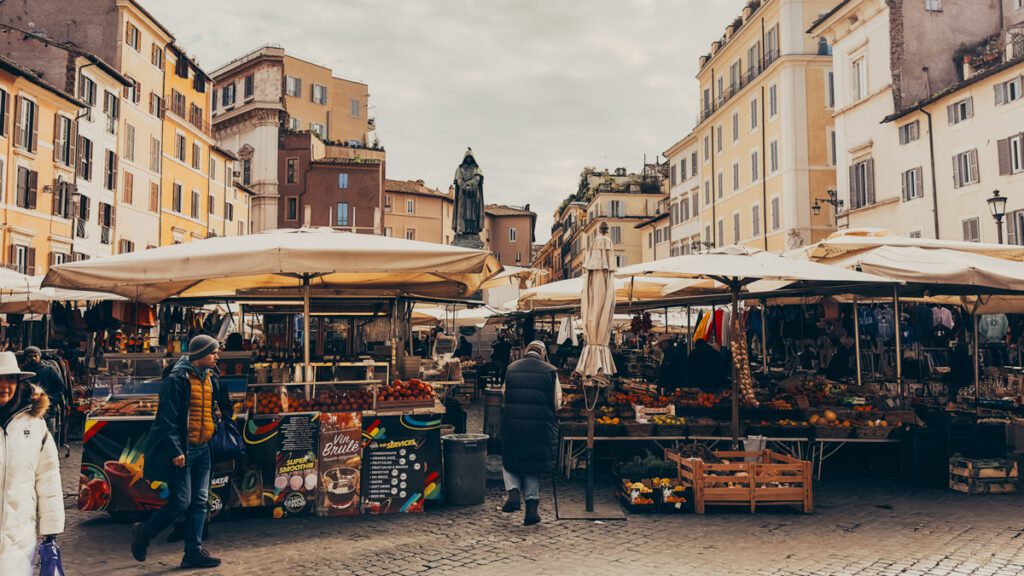
There are more free things to do in Rome than you think.
One of the great things about Rome is that many of the landmarks in the city are free to explore. If you’re looking to discover Rome on a budget, you’re in luck. Also, if you’d rather spend your money on food, you came to the right place!
Small memorials in the Jewish Quarters.
In the Jewish Quarters, and sprinkled throughout Rome, you will find these brass plaques. Called Pietri d’inciampo, Italian for “stumbling stone”, there are more than 200 of these mini memorials. You’ll find many of the cobbles outside doorways, marking the places where individual Holocaust victims were taken from their homes. They are sometimes grouped together, with one stone for each member of a family. You can read about their tragic fates on each stone.


10 fun facts about the Colosseum
The Gladiators didn’t die.
Contrary to what we’re used to seeing in the movies, gladiators didn’t die in the Colosseum. Well, not as much as portrayed. In fact, most of the gladiators that fought here survived. Their average career lasted 5 years, and when they retired, they were given land and money.
However, Christians, animals and criminals were killed here. Often, they had gruesome and bloody deaths. On the bloodiest days, over 10,000 animals could be killed in a single day. It’s estimated that over 1 million animals and half a million people died in the Colosseum.

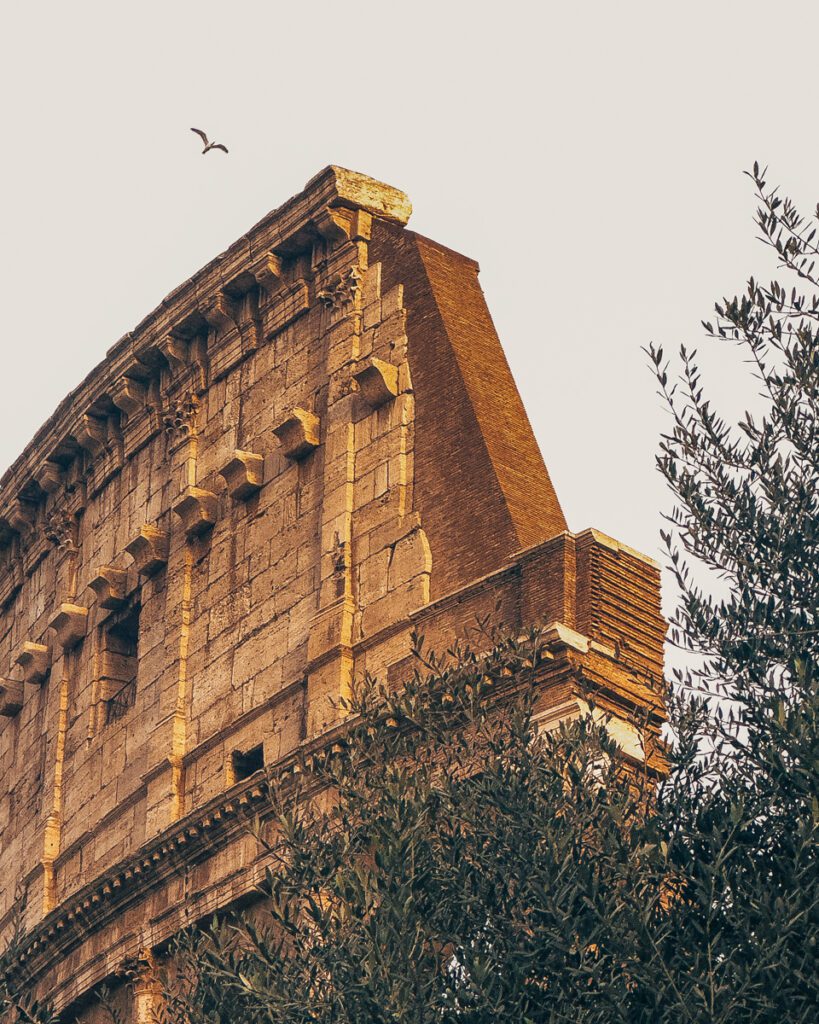
Floods in the Colosseum.
The Colosseum would sometimes be flooded so they could hold naval battles. The wooden flooring was removed and filled it with water. Ships were brought in and naval performances and battles took place. They weren’t very popular so there weren’t too many of them that took place.
Celebrating its opening.
After 8 years of construction, the Colosseum opened its doors in 80 AD. To celebrate, Emperor Titus held 100 days of games.
There was a very tight schedule. Mornings were for animal hunting and punishments (animal attacks). Executions were held during the breaks. And gladiator games were in the afternoon.
How to win favor with the subjects.
For a long time, entrance was free for all residents. This was a way the Emperor could gain favor and popularity with his subjects. Sometimes, food was also provided. We wish our sports teams would offer the same kind of deals!
Tickets were pieces of pottery.
In order to get into the Colosseum, audience members would be given broken pieces of pottery. This was their ticket. Each piece had their gate number (still visible today, above the arches), their section and seat number. If they had free food, this was also indicated.
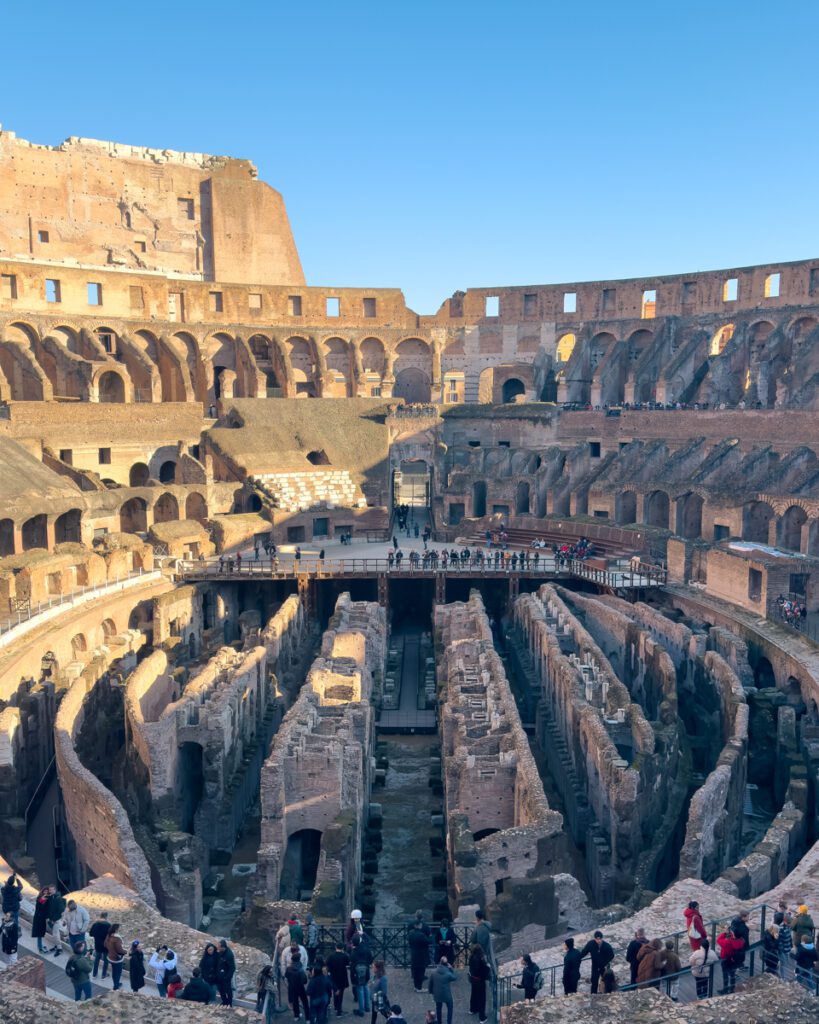

The end of an era.
In 435 CE, the last gladiator games were held in the Colosseum. They just weren’t as popular anymore. They were also too costly to keep running. However, the last animal hunts only stopped in 523 CE, nearly 100 years later.
What came next for the Colosseum.
To try and reuse this vast amphitheater, Pope Sixtus V tried to turn the Colosseum into a wool factory in the late 16th century. He wanted prostitutes to find other work here.
St Peter’s Basilica comes from the Colosseum
When St. Peter’s Basilica was built in Vatican City, they used some parts of the Colosseum and a marble facade. That’s why the Colosseum doesn’t look quite like it used to.
Originally, the Colosseum was constructed using concrete, tuff (a type of volcanic rock), and travertine limestone. Iron clamps were used to hold the blocks together. There were also iron gates that were taken apart during times of war to make weapons.


The movie did not take place in the Colosseum.
We were shocked to find out that Ridley Scott thought the Colosseum was too small to film the movie in. Imagine having access (after passing through tons of red tape), to the world’s largest amphitheater and thinking it’s too small!! Instead, he built a replica in Malta.
The most popular attraction in Rome.
Over 4 million people visit the Colosseum every year. The Colosseum is the most popular attraction in Italy and one of the most popular worldwide. It’s also one of the 7 Wonders of the world.
If you want to learn more about the Colosseum, we recommend you take a guided tour. It’s the best way to learn more about this amazing structure, as well as gaining access to parts you can’t see self-guided.
30+ amazing fun facts and interesting things to know about Rome
There you have it! Some fun facts about Rome. From the secrets and legends of Ancient Rome to the more interesting things to know about the city. And let’s not forget about the interesting facts about the iconic Colosseum.
Let us know in the comments if there are other fun facts we should be adding. Which of these facts were new to you? Are there other questions you have about Rome or its landmarks you’d like to know more about?
Thank you so much for reading the article all the way through!
We put a lot of time and effort into the content we create. Please like, comment and share – every action on your part helps us out tremendously and is very appreciated.
You can also help us by pinning this article for others to find.









0 Comments